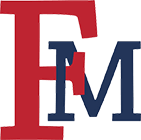FRANCIS MARION UNIVERSITY MODERNIZES WITH RAMP
Francis Marion University (FMU), one of South Carolina’s 13 state-supported universities, provides strong liberal arts based programs for both undergraduate and graduate studies. FMU is fully accredited and has nearly 4,000 students enrolled at its Florence campus. FMU extended its student administration system with LANSA web access by students and faculty members to registration, class scheduling, grades, degree audits, financial aid applications and more. FMU is now modernizing its core System i applications with RAMP and Visual LANSA.
John Dixon, chief information officer at Francis Marion University, says, “When I joined Francis Marion as their first CIO in January 2007, it became apparent our users wanted an up-to-date presentation of university information. As a short-term strategy, I decided to implement a GUI interface to our existing ERP system. We reviewed several applications on the market for accomplishing our goal and decided that LANSA’s RAMP product offered the most flexibility and easiest deployment.”
LANSA’s RAMP product offered the most flexibility and easiest deployment.
- The Challenge
- Modernizing the core system to internal users
- Opening up the core system to students
- Conclusion
- Company and System Information
The Challenge
The roots of FMU’s student administration system go back to the 1970s, when FMU leased IBM S/34 computer resources from a local service bureau. FMU purchased its own IBM S/36 in 1986, followed by an IBM AS/400 a few years later. Development was in RPG with the addition of LANSA from 2000 onwards.
FMU’s student administration system stores a lot of business logic and contains great information, but its 5250 screens and RPG code, some of it still running in S/36 mode, were hampering user productivity and integration with new technologies.
Both in 2000, when FMU looked for a way to provide web access to students, and in 2007 when FMU wanted to modernize its legacy RPG applications, one option was to purchase a packaged solution.
“We have been looking at student administration packages off and on,” says Robin Moore, director of campus applications and data services at FMU. “But with the sophisticated functionality our users are accustomed to, prices range from one to two million dollars. If your existing system is not working well, you might find it easier to justify spending that kind of money. But we didn’t want to just throw away what we had, because it was working so well. We wrote the system just the way our users wanted it and it meets all their requirements.”
“We talked with several package vendors, looked at development tools and what other universities were doing. If it comes to a package one day, we have no problem with that. But right now, it is not a feasible option. We decided to modernize our existing solution, because that way we can continue to modify and enhance the system any way we want and service our users best.”
“We already had a positive experience with LANSA’s older development tool, because we have successfully delivered web access for students, faculty and staff members. We evaluated Visual LANSA and specifically liked its Web Application Modules or WAMs, that let us use the same object oriented programming style in Windows and browser applications and snap programs into the Visual LANSA Framework.”
“We also like the fact that LANSA can be deployed to multiple platforms, because although I personally love the stability and security of the System i, I don’t want a solution where FMU would be locked into a platform,” continues Moore.
“Our student administration system has 8,000 programs and 4,000 files. Eventually we want to have a graphical, cross-platform environment with no reliance on RPG. Using RAMP we can cost effectively modernize the priority modules and gradually get there.”
Eventually we want to have no RPG and deployment is graphical and cross-platform. Using RAMP we can cost effectively and gradually get there.
Modernizing the core system to internal users
FMU faculty and administrative staff used IBM’s Client Access and BOSaNOVA terminal emulation to access the 5250 screens of the student administration system, but that did not make it easy to get to the data. The application was hard to navigate as the sequential nature of 5250 menus and screens meant that users had to go back into and out of different parts of the application to gather information about a student. And function keys were mapped inconsistently from application to application, making the user experience inconsistent.
“New and infrequent users found it especially hard to remember how to use the system,” explains Moore. “That is why we decided to modernize the student registration module first. Registration only happens a few times each year and for many users it is the only time they use the system. Another good reason to tackle this module first was that it also needed new functionality, such as photo identification and email integration,” explains Moore.
The new RAMP-ed module offers a sophisticated search and sort of student records, with tabs to quickly point-and-click to the required details. Student information has been extended with a photo ID, reducing the risk of identification theft. The email tab offers new functionality and easy integration with MS Office.
“It also has graduate and under-graduate searches, so users can look up a student’s history, open classes, directory information and lots more. Users can point and click to all the information they need to advise and register a new student,” explains Moore. “More over, they can now print information on their local PC printers, instead of having to walk to one of the system printers.”
“The new modules, named SwampFox (the nickname for Brigadier General Francis Marion of Revolutionary War fame), are easy to use and intuitive, even for the users who only access the system a few times a year. Users like the GUI, the tabs, the point and click and the fact they can send an email so easily from within the application.”
About 45 tabs in the RAMP-ed module contain refaced RPG programs (“cherries”), while five tabs contain completely new functionality that has been developed in Visual LANSA (“plums”). In addition, the search, sort and navigation programs are all new and automatically generated by the Visual LANSA RAMP framework.
“Even though this was our first Windows rich client implementation, the project was fairly easy and straight forward,” says Moore. “Two staff members worked on the project with my help. We purchased RAMP in May 2007, did the RAMP training, worked together with the faculty members on the requirements and deployed the GUI module in September 2007.”
“The next group of users we are going to extend SwampFox for will again be casual users such as executive staff and student-oriented faculty and staff involved in student housing, university relations, and so on.”
“We selected RAMP’s rich client Windows interface and use LANSA’s Just-in-Time deployment to update user’s PCs every time they connect. So deployment is easy. Out of 250 internal users, 100 use SwampFox, including five Macintosh users, who use remote desktop to run the application from a Windows server.”
Users can point and click to all the information they need and print on their local PC printers.

Opening up the core system to students
Although FMU has only recently started to modernize its student administration system for internal staff, services and communication with students have been priority since 2000.
“We wrote our first web applications with LANSA in 2000. We started out with an Open Classes module,” explains Moore. “It lets students see what classes are open and how many seats are left in the class. Students can also review and print their class schedules from the web.”
Other LANSA-based web applications include Student Registration, which kicks off procedures to verify the entered details and comply with government regulations. Students can pay over the web via a third-party service for credit card payment and check the status of their admission online.
Students can apply for financial aid over the web and once granted keep track of their account balance online.
Behind the scenes, the LANSA web applications call both LANSA and RPG programs. “We didn’t have to write all the programs in LANSA,” explains Moore. “It was easy to re-use existing RPG logic with rules and calculations consistent with paper-based applications, so that saved a lot of time.”
Students can also look up their grades and verify their personal information online and change their contact details. Faculty and staff can download rolls from the web and post grades securely, all using LANSA.
Students can also do a Degree Audit, which analyses degree requirements, checks the courses completed and tells the student what courses they need to finish their degree.
“The logic is quite complex and 100 percent LANSA,” explains Moore. “The program that does the analysis has over 2,490 lines of RDML. The files and rules are maintained dynamically by the Registrar’s Office, so there are another 30 or 40 programs to maintain the degree requirements and course information.”
It was easy to re-use existing RPG logic. That saved a lot of time and ensures we used pre-tested code.
Conclusion
“With our small and knowledgeable team of four developers and the help of LANSA services, we can deliver modern applications and online services to our staff, faculty members and students. We don’t have to rely on a package vendor and we don’t have to hire new staff,” concludes Moore.
“LANSA and RAMP are easy to learn. One of our programmers already knew LANSA, but only the older part of the tool. She became familiar with Visual LANSA development and rich-client deployment very quickly. The other developer only had RPG skills and was productive with LANSA in just a few weeks.”
“One of the main reasons we selected RAMP and Visual LANSA is the framework approach. It provides for a very intuitive, consistent end-user environment and because the framework is automatically generated, development is more productive.”
“The other reason for selecting LANSA is that it can work both on System i and on Windows. We can work with databases on the PC as well as with DB2/400. LANSA’s cross platform capabilities are crucial to us.”
“Our developers can use Visual LANSA for all development, whether Windows, web or native iSeries. That will boost productivity in our team. Next, we will look at application areas that need modernization and/or replacing. As time permits we will change “cherries” over to “plums” and finally get rid of the remaining System 36 code.”
“We have done a lot with LANSA in the past and we are going to do a lot more with RAMP and Visual LANSA in the future. Now that our users have seen the first RAMP-ed module, expectations have been set very high.”
We are going to do a lot more with RAMP and Visual LANSA. Now that our users have seen the first RAMP-ed module, expectations have been set very high.
Company and System Information

- Francis Marion University (FMU) is one of South Carolina’s 13 state-supported universities, providing a strong liberal arts based education. FMU offers undergraduate degrees in the arts, laboratory sciences, business, education, social and behavioral sciences as well as graduate programs in education, business and psychology. In 2008, for the seventh year in a row, FMU was ranked by U.S. News & World Report magazine as one of the south’s top 100 masters level universities.
- The core student administration system and all other IT systems, including financial aid, admission, accounting and payroll, are developed and maintained by FMU’s small in-house team that consists of four developers and a director.
- FMU uses a IBM System i5 520
- For more information visit: www.fmarion.edu

